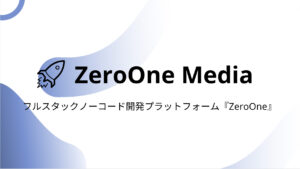
They only state that auditors should reduce the audit risk to an acceptably low level. Hence, auditors’ professional judgment which is based on their knowledge and experience is very important here. Acceptable audit risk is the concept that auditors need to obtain sufficient appropriate audit evidence to draw reasonable conclusions on which to base the audit opinion.
Balance Sheet
Detection risk can be reduced by auditors by increasing the number of sampled transactions for detailed testing. These three risks are multiplied together to calculate overall audit risk, or the risk of an auditor drawing inaccurate conclusions. And becomesmore specific as the auditor or audit firm audit risk model learns about the audited entity. If one of the “x” variables increases, the resulting “y” variable will increase too. Likewise, if an “x” variable decreases, the resulting “y” variable decreases. When combined multiplicatively, auditors gain a more accurate representation of the audit risk.

How can an auditor reduce audit risk?
This means that the above equation is not typically used to calculate risks like other mathematical equations are normally used. The auditors will nevertheless assess the risk values in some form, often by descriptive means. Detection risk forms the residual risk after taking into consideration the inherent and control risks pertaining to the audit engagement and the overall audit risk that the auditor is willing to accept. Control https://www.bookstime.com/ risk is the risk that internal controls established by a company, to prevent or detect and correct misstatements, fail and thus the financial statement items become misstated. The model determines the appropriate auditing procedures for the financial information presented in the company’s financial statements. They can however balance these risks by determining a suitable detection risk to keep the overall audit risk in check.
Inherent Risk
In this approach, auditors analyze and assess the risks related to the client’s business, transactions and internal control system in place which could lead to misstatements in the financial statements. However, the risks of material misstatement of the financial statements are the same for both the audit of financial statements and the audit of internal control over financial reporting. In-depth Understanding of the Client is another cornerstone in the management of audit risk. By gaining an intimate knowledge of the client’s business operations, industry nuances, and the external environment, auditors can pinpoint areas susceptible to risk.
Examples of Detection Risks in Auditing
A common example arises in the context of complex financial transactions, where the intricate nature of the transactions themselves could obscure significant misstatements from the auditor’s view. This is particularly pertinent when audit sampling — a technique widely used to infer the accuracy of financial records — is deployed. The risk that the selected samples are not representative of the entire population introduces a potential for overlooking material errors or fraud. Additionally, the rapid evolution of an entity’s environment and increasing sophistication of financial products heighten the detection risk. Generally, an auditor will perform a control risk assessment concerning the financial statement level of risk and the assertion level of risk.
- It is best determined during the planning stage and only possesses little value in terms of evaluating audit performance.
- Control risk is the risk that the client’s internal control cannot prevent or detect a material misstatement that occurs on financial statements.
- On the other hand, if auditors believe that the client’s internal control is week and ineffective, they will tick the control risk as high.
- Nearly 50% of the Fortune 500 leverage AuditBoard to move their businesses forward with greater clarity and agility.
- However, auditors can reduce the level of risk, e.g. by increasing the number of audit procedures.
- The audit, therefore, provides (1 – .05) assurance that the financial statements are free from material misstatement.
With a greater understanding of the controls and procedures put in place, auditors can then pinpoint the areas where risks are higher. Audit risk models are used during the planning stages of an audit to help the team determine which procedures make the most sense. During the audit process, they’ll go through the accounts and transactions listed on a company’s income statement, balance sheet, and cash flow statement. It’s important to keep in mind that these financial statements aren’t always complete or accurate.
Risk assessment in auditing is complicated because it entails cataloging potential problems and conducting a dynamic analysis of how these risks interact within the context of the audit engagement. This understanding of audit risks lays the groundwork for the planning and execution of audit procedures that are finely tuned to the risk landscape, ensuring the reliability and integrity of financial statements. The risk assessment phase is integral to the complex financial auditing process. At this juncture, auditors embark on a journey to pinpoint and appraise risks capable of skewing the reliability and accuracy of financial statements. This proactive identification and evaluation are foundational in developing an audit approach that will address and mitigate these risks effectively.
.css-g8fzscpadding:0;margin:0;font-weight:700;What is an audit risk model?

Auditing firms carry malpractice insurance to manage audit risk and the potential legal liability. Audit risk is the risk that financial statements are materially incorrect, even though the audit opinion states that the financial reports are free of any material misstatements. The first audit assignment is also inherently risky as the firm has relatively less understanding of the entity and its environment at this stage. In order to reduce the complexity of minimizing audit risk, auditors utilize a suite of sophisticated tools designed to enhance the precision and reliability of their work. This is due to without proper assessment of inherent and control risk, auditors would have no basis for assessing the detection risk.
- Audit risk is the risk that the auditor gives an inappropriate opinion on an audit engagement.
- In this case, auditors need to obtain reasonable assurance about whether the financial statements as a whole are free from material misstatement.
- For example, those businesses that involve more with hedge accounting tend to have higher inherent risk than those of trading companies.
- In this case, auditors will not perform the test of controls on the bank reconciliation.
- The Audit Risk Model is a strategic framework auditors use to assess and manage any risks or material misstatements in a company’s financial statements.
Mastering Audit Risk: Top Strategies and Tools

If there is a low detection risk, there is a minor probability that the auditor will not be able to detect a material error; therefore, the auditor must complete additional substantive testing. A higher inherent risk indicates that the transaction class, balance, or an attached disclosure is at risk of being materially misstated. Lower inherent risk implies that the account is not likely to be materially misstated.
- This is due to hedge accounting tends to be complicated and require a high level of skill and knowledge in accounting.
- If one of the “x” variables increases, the resulting “y” variable will increase too.
- Inherent risk is generally considered to be higher where a high degree of judgment and estimation is involved or where transactions of the entity are highly complex.
- This uniformity is essential for maintaining the quality and reliability of the audit process, reducing the potential for oversight and errors.
- Likewise, this can be done when auditors obtain sufficient appropriate audit evidence to reduce audit risk to an acceptable level.
For example, those businesses that involve more with hedge accounting tend to have higher inherent risk than those of trading companies. This is due to hedge accounting tends to be complicated and require a high level of skill and knowledge in accounting. While the model benefits the auditor and the business, it has a few drawbacks. These include subjectiveness, lack of scope, the chance of fraud, expenditures of time and resources, and incomplete information. The statement of cash flows is a great indicator of a company’s financial state. For instance, if the income statement shows a loss for the fiscal period.
